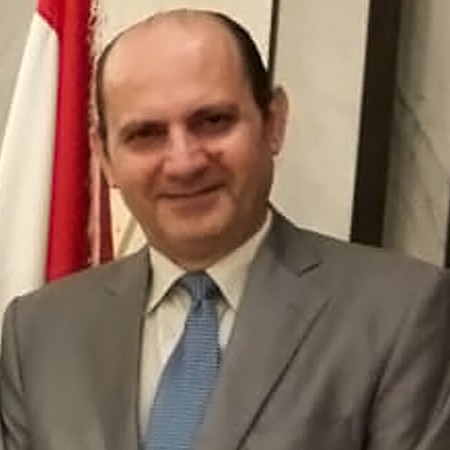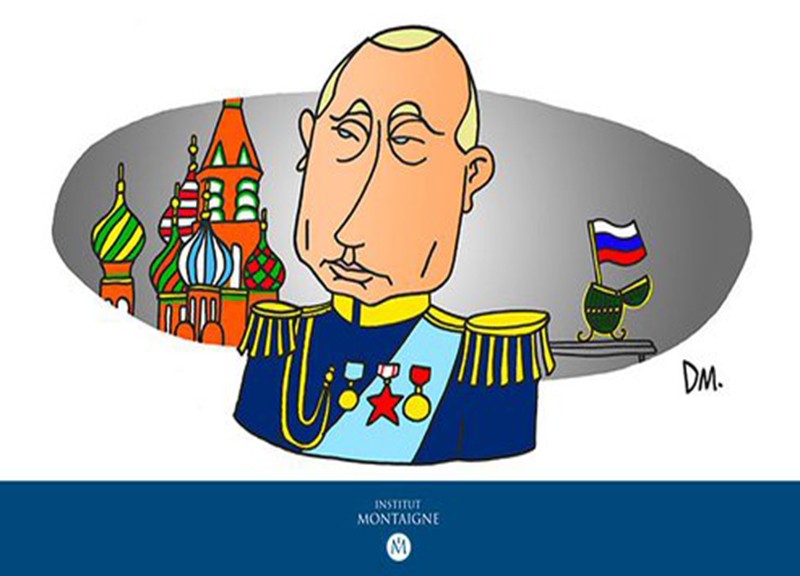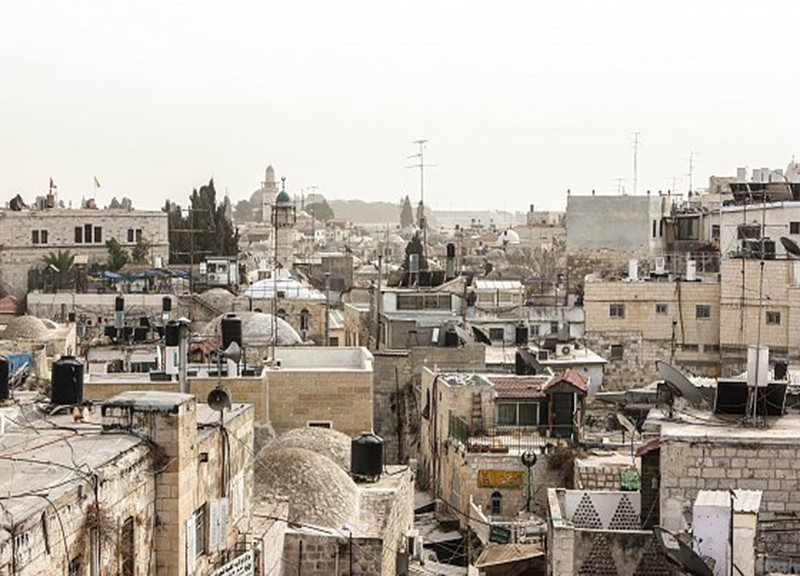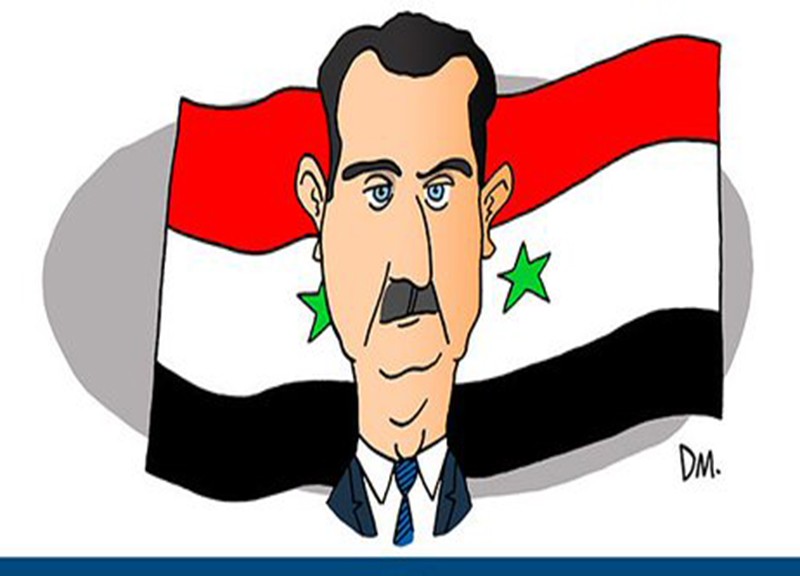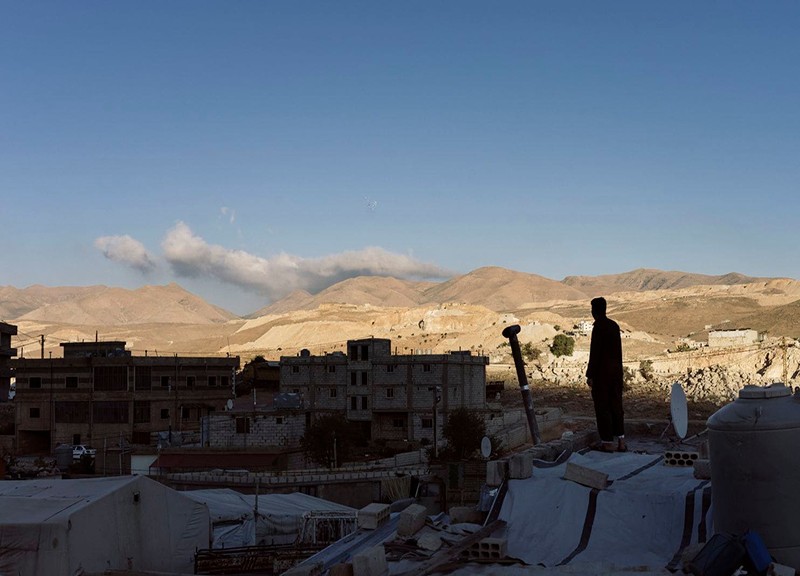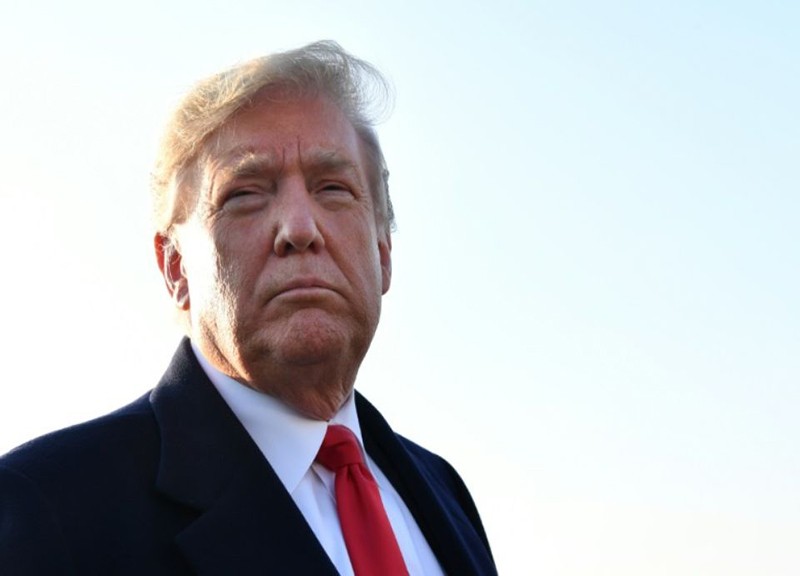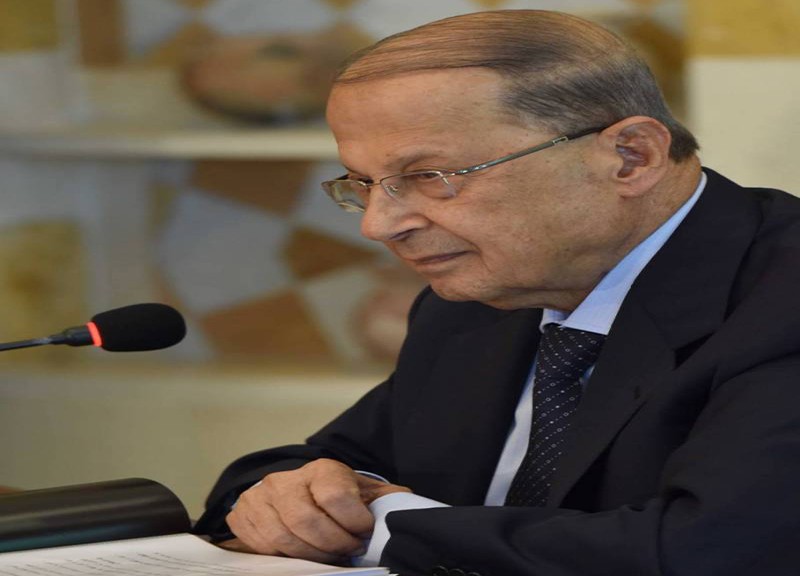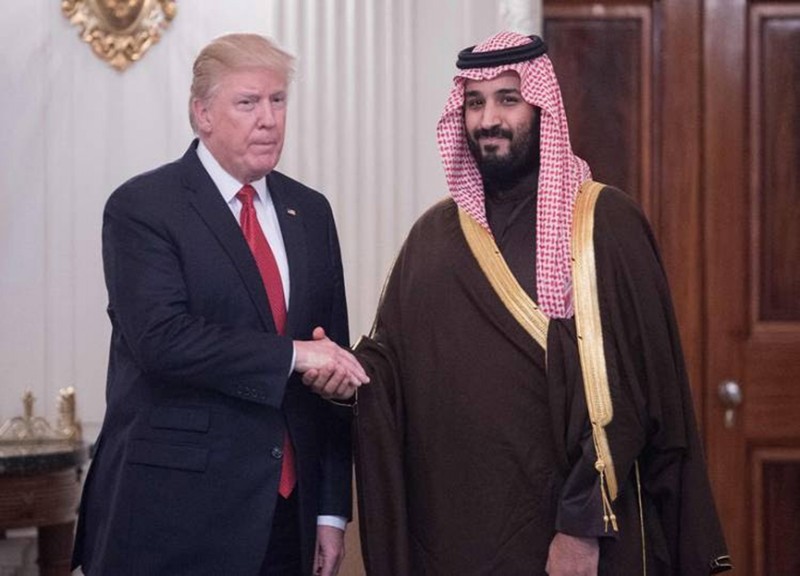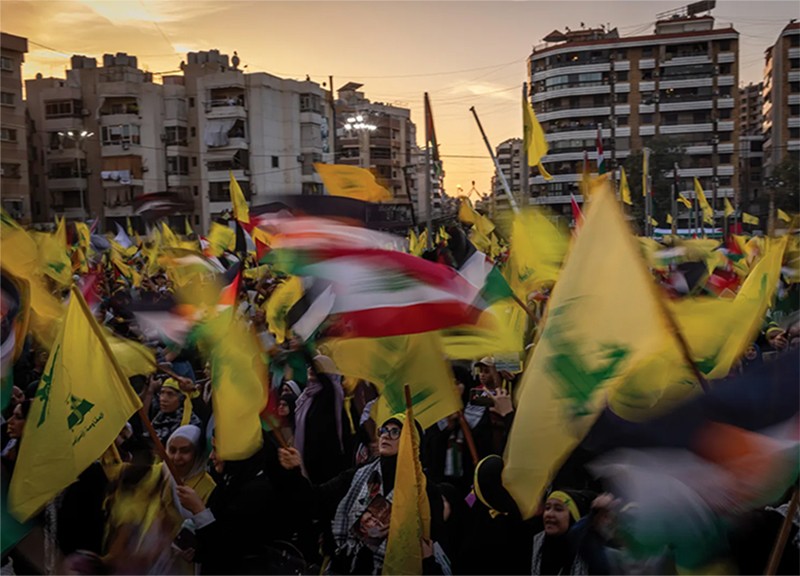
Months of fighting at the border threaten to ignite an all-out conflict that could devastate the region.
by Dexter Filkins, The Newyorker
This summer, I rode south from Beirut on Route 51, the highway that runs along the Mediterranean toward Israel. Beirut is a city of many faiths, but less than an hour to the south is Lebanon’s Shiite heartland. Passing the ancient Phoenician city of Sidon, I entered a region where mosques stood in every town. Wall-size portraits depicted the sect’s icons, Hussein and Ali, and flags and symbols announced the presence of the Party of God, better known by its Arabic name, Hezbollah. In each village along the route hung banners with the faces of Hezbollah soldiers killed fighting Israel, the group’s great enemy. In Seddiqine, men were clearing the wreckage of a home flattened the night before by an Israeli bomb; a Hezbollah flag fluttered atop the rubble. “This is an everyday thing,” one of the men told me.
Hezbollah has been in conflict with Israel since the group was founded, in the nineteen-eighties, but in the past year the fighting has grown dangerously intense. On October 7th, Hamas militants surged across Israel’s southwestern border and killed more than eleven hundred people. The next day, Hezbollah fired into Israel from the north, launching a volley of rockets that provoked a retaliatory strike. Since then, the shelling and bombing by each side have intensified, stoking fears of an all-out war that would devastate the region.
The farther south I rode, the more ravaged and empty the landscape was. In Tebnine, as a pair of ambulances raced through traffic, I passed a billboard showing seventeen more Hezbollah fallen. “They paid with their lives!” it said. In the village of Haddatha, a cemetery was almost entirely given over to Hezbollah, each tomb set with a portrait of a young man who died in his prime.
A few hundred yards from the Israeli border, I arrived at the hamlet of Rmaych, which stood unscathed in a landscape of rubble and tombstones. Its residents were nearly all members of the Maronite Catholic Church. With no Shiites and no Hezbollah there, the Israeli jets and artillery crews had largely spared the town. “The war is all around us, but it is not here,” Father Najib al-Amil, a local priest, told me. He invited me into his living room, where we sat among a coterie of Maronite saints.
The people of Rmaych have a peculiar vantage point on the war. Father Najib pointed south, to a hilltop a few hundred yards away, where an antenna tower marked the Israeli border. Then he pointed northwest, to the neighboring village of Aita al-Shaab. “That’s a Hezbollah village,” he said. “We are in the middle.” Since the conflict began, he said, Hezbollah fighters had twice come into Rmaych, set up Katyusha rocket batteries, and fired into Israel. The last time, in December, an Israeli jet bombed a house in Rmaych that Hezbollah had commandeered. Afterward, Najib sent the group a message that it was not welcome. “We told them, ‘We can’t prevent you from passing through our town, but we will not let you fire from here,’ ” he said. “ ‘Put your missiles somewhere else.’ ”
The Hezbollah men left, but they kept up the fight from Aita al-Shaab, just across the hill. A few hours before I arrived, Najib said, militants there had fired rockets over the border. Israeli bombs landed moments later, exploding so fiercely that the earth shook.
At seventy-three, Najib has seen wars and skirmishes come and go, but he says that the current one is the worst, if only because the resolution is so uncertain. The slope that runs from his village to the border, which once held tobacco fields and olive groves, has been charred by bombardments of white phosphorus, used by the Israelis to deny cover to Hezbollah fighters. International treaties forbid using white phosphorus against civilians; it burns through flesh and can’t be extinguished with water. When chunks of it fell on Rmaych, Najib said, they burned for four days. “There is no business in this town, because no one can go into the fields,” he said. Even so, the villagers seemed reluctant to denigrate Israel. “The Israelis have not treated us unfairly,” Najib said. As we talked, he also refrained from criticizing Hezbollah. “I need to choose my words carefully,” he said, though he allowed, “Hezbollah started this war.”
That day, Najib was giving four sermons—including one at the Church of Transfiguration and another at the three-century-old St. George. The villagers were watching him closely, he said: “If I were to leave the town now, everyone would leave.” Meanwhile, they stay away from the Israeli border, and also from the village next door. “No one here would dare go into Aita al-Shaab,” Najib said. “There are only fighters there.”
As we walked out onto Najib’s porch, another man introduced himself, though he was too afraid to give anything but his first name, Paul. A few weeks before, he said, he had fled his home in Qaouzah, a Christian village nearby. Hezbollah’s men regularly brought rockets to fire into Israel, and Qaouzah was too small to resist. Every Hezbollah volley prompted a nearly instantaneous counterstrike, so Qaouzah was mostly empty, Paul said; he and others returned only to check on their homes and to care for the old people who were too frail to leave. I asked if he would take me into Qaouzah on his next visit. “Do you want to die?” he said.
Paul told me that Qaouzah, like the rest of Lebanon, was held hostage by the possibility of increased conflict. “Hezbollah is going to drag us into a war,” he said. The group’s leaders have said that they will continue their attacks until Israel halts its operations in Gaza—a condition that Israel has no intention of granting. In the meantime, the cross-border assaults grow more threatening. An open war would be devastating. Hezbollah, a far more formidable and better-armed group than Hamas, is believed to possess at least a hundred and fifty thousand missiles and rockets, many of them capable of hitting targets across Israel. In the inevitable counterstrikes, Lebanon, which has uneasily accommodated Hezbollah since the nineteen-eighties, would likely be destroyed.
Two decades ago, a Western official pulled up in front of a Hezbollah office in southern Beirut and sent his bodyguards away. “My security detail went crazy,” the official told me. Leaving his cell phone behind, he was ushered by Hezbollah members into a car whose windows had been blacked out. After several blocks, the car stopped, and the official was led to another vehicle. He was driven for a while and then switched again—and again. Finally, the car began descending, into what he guessed was an underground parking garage. “We went very far down,” he said. The official was led from the car to an elevator, which went up a couple of floors. The doors opened to reveal Hassan Nasrallah, the secretary-general of Hezbollah. “There he was, just standing there, waiting for me,” the official said.
Nasrallah has spent much of the past eighteen years in fortified bunkers, surrounded by guards. He has been largely in hiding since the last war between Israel and Hezbollah, in 2006—a thirty-four-day spasm of violence that left Lebanon in ruins. During the fighting, Israeli jets flattened most of Dahiya, the part of southern Beirut where Hezbollah has its headquarters. They also targeted Nasrallah twice, missing both times. “The third time, we won’t miss,” an Israeli official told me afterward.
Since then, Nasrallah has made only occasional visits to the surface, appearing mostly in prerecorded videos. Now sixty-three, he has grown gray and pale, his pudgy, bright-eyed face framed by wire-rimmed glasses and a long beard. The group he leads is the dominant force in Lebanon, with a political arm in the parliament and an army recognized as one of the most fearsome in the region. Yet its leaders stay mostly in the shadows. Hezbollah’s black-suited fighters show themselves at funerals for fallen comrades—or in the streets, when they need to flash weapons to get their way.
In its early years, Hezbollah gained a reputation for fostering unrestrained violence, with links to suicide bombings, kidnappings, and torture. But, after the 2006 war, the Western official met with Nasrallah and other Hezbollah leaders, and came away convinced that they had become more reasonable. “Nasrallah never took notes, but the people around him did, and he always followed up,” the official said. “I wouldn’t want to spend a weekend with him, or have a meal. But he’s a smart, rational person.” By most accounts, Israel’s leaders have not tried to kill Nasrallah again. “I think if the Israelis had wanted to kill him, they would have,” Ryan Crocker, a former American Ambassador to Lebanon, told me. “He’s the devil they know.”
On October 7th, Nasrallah called on other Arab nations to support the Palestinian cause, by “affirming their unity in blood, word, and action.” Yet, at least at the beginning, his organization was measured in its strikes; it expended only a fraction of its arsenal, and refrained from using its long-range guided missiles, which could devastate neighborhoods and institutions across Israel. The Israelis launched counterstrikes in roughly equal measure, emphasizing that the violence was controlled.
But, as the exchanges continued, the destruction steadily increased, with the number of daily strikes on each side creeping up from about ten to, at times, dozens. Israel says that it has killed more than thirty Hezbollah leaders and some three hundred fighters. Its agents have apparently even struck inside Lebanon; in April, a woman lured Mohammad Surur, an important financial facilitator for Hezbollah and Hamas, to a villa outside Beirut, where he was interrogated, beaten, and killed. He was found shot several times, with cash scattered around his body, indicating that robbery was not a motive. The rumor in Beirut was that the assassination was carried out by a secret Israeli unit called Nili, named for a Jewish organization that spied on the Ottoman Empire during the First World War.
The attacks at the border have forced tens of thousands of civilians to flee, emptying out Lebanese villages and Israeli kibbutzim. Hezbollah’s rhetoric has been increasingly bellicose. A video that the group released recently shows aerial photos and G.P.S. coördinates of Israeli targets—an airport, a seaport, a gas field, and a nuclear-research center—with crosshairs on them. In the video, Nasrallah says, “If a war is imposed on Lebanon, the resistance will fight without restraints, without rules, without limits.”
Israeli officials, after focussing for months on subduing Hamas, say that they are contemplating a decisive pivot toward Hezbollah—what one Israeli general described to me as “the moment of truth.” During the 2006 war, Israel was frustrated by the limits of its intelligence on Hezbollah, particularly on the group’s network of underground bunkers and missile launchers. Now, a second Western official told me, “the Israeli intelligence has significantly improved, in terms of both individuals and infrastructure.” In a speech this spring, Nasrallah hinted at the extent of his opponents’ intelligence gathering. “Your smartphone hears everything you’re saying and takes all of your data,” he said. “It can find your precise location—which room you’re in, whether you’re in the front of the car or the back. Does Israel need more than that?” He issued a plea to his followers in the south: “Break your phone, my brother! Bury it. Put it in an iron box and lock it up.”
In June, I visited Dahiya, the cacophonous neighborhood in southern Beirut where Hezbollah is headquartered. As I drove, Hezbollah scouts crisscrossed the streets on motorbikes, passing shops and billboards for Botox injections and breast implants. Dahiya has been rebuilt since 2006, and the squat building that was my destination had no Hezbollah markings. My translator, a liberal Christian woman from Beirut, was so oblivious of the conservative parts of her home town that she needed to ask a friend to demonstrate how to wrap her head in a hijab. When we arrived, we left our phones in our car, knowing that we would otherwise have to surrender them. Inside, I met a tall young man named Ali, who grew up in West Africa, where his parents, like many Lebanese, ran several businesses. After a few minutes, Ali led me outside to another car. “Follow me,” he said, and we drove to a second building, where he brought me to a room without windows or adornments.
A few minutes later, Naim Qassem, Hezbollah’s deputy secretary-general, entered, wearing a white turban. Where Nasrallah is impish and often fiery, Qassem is studious and dour—an unlikely warrior. Before helping to found Hezbollah, he was a chemistry teacher for many years; his four-hundred-and-sixty-three-page book, “Hizbullah: The Story from Within,” now in its eighth edition, is the movement’s official account of its history and its justifications. Among its central goals, Qassem writes, are to impose an Islamic republic on Lebanon and to destroy the state of Israel: “The implantation of the Zionist entity in the region is illegitimate—a cancerous gland the existence of which is only a prelude to dominion over the entire region.”
Qassem, who is seventy-one, sat upright, his feet flat on the floor, and rubbed his hands incessantly. He told me that Hezbollah had entered the war to pressure Israel to drop its campaign in Gaza, which he said was aimed at “exterminating” the Palestinian people. “How can we be silent and watch? We had to resist,” Qassem said. Hezbollah sought to tie up a sizable portion of the I.D.F. on the northern border, and to disrupt life in Israel by forcing mass evacuations. “We do not seek to wage a new war, or expand the war,” he said, “but, rather, to make the Israelis worried about continuing the war in Gaza.”
Initially, he told me, Hezbollah had fired rockets no farther than three miles across the border, and had done no more than match Israeli counterstrikes. But he acknowledged that the conflict was following a logic of its own. “We are actually not confident that we can limit the war,” he said.
Qassem spoke in the rehearsed cadences of a party hack—loyal, without deviations. Halfway into our talk, my translator complained that she couldn’t hear, because her hijab was wrapped too tight. A Hezbollah press officer sitting in on the meeting pulled the cloth back, exposing her ear—a striking provocation in the realm of conservative Islam. Qassem pretended not to notice.
He grew most animated when I asked him about himself. Thirty years ago, he’d traded the quiet routine of a teacher for the life of a militia commander—always in hiding, often underground, constantly contending with the threat of violent death. Did he ever miss his old existence? “I live the best life—I would not give it away,” he said. “Who said we don’t go to the beach and to restaurants? We exercise, we eat whenever we want, and we live life to the fullest.”
And what about his boss, Nasrallah? “He is the happiest man on earth!” Qassem said.
In April, the Israeli defense minister, Yoav Gallant, gave a bluff statement on his country’s position in the conflict. “Half of Hezbollah’s commanders in southern Lebanon have been eliminated,” he said. “The other half are in hiding.” (Hezbollah denied this, saying that only a small number of its leaders had been killed.) When I contacted a Hezbollah field commander, he agreed to meet me only if I concealed his real name and his exact location. A few hours out of Beirut, I arrived at his house, near the Israeli border. Habib, as I’ll call him, greeted me at the door.
Dressed in jeans, a buttoned shirt, and a baseball cap, Habib gave off the confident air of an American military officer in late middle age. He had just finished checking that his men were executing the day’s plans. A woman, her head wrapped in a scarf, brought us water, then left the room without a sound. Lighting a Marlboro, Habib told me proudly that his son was away at college, studying engineering. A few minutes into our conversation, two huge concussions rattled the windows and shook the earth. Habib smiled; the noise came from Israeli jets breaking the sound barrier. “Every day,” he said.
Habib told me that, in the early months of the conflict, it was the Israelis who had increased the intensity of the attacks—but lately Hezbollah had been ratcheting up, too. “The Iranians want us to escalate, so we are escalating,” he said. Habib, who had made several visits to Iran over the years, left little doubt that the clerics in Tehran were ultimately in charge of his troops; Iranian operatives were working alongside Hezbollah in southern Lebanon. “The Iranians control every bullet we have,” he said.
Earlier that week, the Israelis had killed one of Habib’s peers, a senior Hezbollah leader named Taleb Abdallah. Habib shrugged when I mentioned it. “It’s nothing,” he said. “For every man who is martyred, there is another waiting in line to take his place.” Recently, Habib told me, he had been helping to plan new missions. He wouldn’t give details, so it was impossible to know if he was bluffing, but he said, “We’ve done very special operations for the Israelis.”
Habib joined Hezbollah not long after its founding, in the early nineteen-eighties. He was a teen-ager, one of eight children from an impoverished home. Like many early members, Habib was deeply influenced by Musa al-Sadr, a Shiite cleric who preached a kind of liberation theology. In Lebanon, as in much of the Sunni-dominated Arab world, the Shiites constituted an underclass. “We had nothing,” he said. “But after Musa Sadr we had power.” Sadr’s movement was called Amal, or Hope.
During those years, Lebanon was wracked by a civil war, in which clashes between Christian militias and insurgents from the Palestine Liberation Organization grew into a vicious, many-sided conflict. In 1982, the Israeli military moved into Lebanon in an effort to destroy the P.L.O., whose fighters had killed scores of Israelis. The invading force barrelled all the way to the P.L.O.’s headquarters in Beirut, ultimately sending its chief, Yasir Arafat, into exile. Initially, Habib told me, Lebanon’s Shiites didn’t mind watching the P.L.O. get hammered. But then the Israelis inserted themselves into the civil war, favoring the Christian militias. The mood turned, and Shiites began forming their own armed groups.
Iran, seeing an opportunity, sent in Revolutionary Guard operatives, who began gathering together local Shiite militias, with the promise of confronting the Israelis. Robert Baer, who was then an officer for the C.I.A., told me that the recruits assembled in the Bekaa Valley, east of Beirut, at a military installation called the Sheikh Abdullah barracks. The alliance that they formed became known as Hezbollah. Its foundational document, the “Open Letter to the Oppressed,” is the cry of a downtrodden group vowing to avenge what it saw as years of injustice at the hands of Israel and the West. Its authors pledged to fight until “the Zionist entity” was destroyed.
Abbas al-Musawi, who took control of the group, was a Shiite cleric who had sworn affinity to wilayat al-faqih, a doctrine that gave Iran’s Grand Ayatollah unlimited power over his followers. “Iran and Hezbollah are totally coördinated in every way,” a senior American diplomat told me. “They sing from the same song sheet.”
As Lebanon’s Shiite militias coalesced into Hezbollah, they launched a spectacularly brutal campaign of political violence, led by a bloodthirsty commando named Imad Mughniyeh. Suicide bombers killed more than a hundred people in two bombings at an Israeli military headquarters in Tyre, and fifty-eight soldiers at the French Army’s barracks in Beirut; an assault on the U.S. Marine barracks there left two hundred and forty-one dead. In 1983, a truck bomb went off at the American Embassy. Ryan Crocker, then a young Foreign Service officer, was in his office on the fourth floor. “There was a brilliant flash of light and then a very powerful wind,” he told me. Crocker shared the floor with the C.I.A.; seconds after the blast, he went into the hallway to check the damage. “Where the C.I.A. station was supposed to be, I was looking at the Mediterranean,” he said. Sixty-three people were killed.
More than a hundred Westerners were kidnapped in the area during those years. Baer told me that when he worked for the C.I.A. in Lebanon he received daily transcripts of Hezbollah’s intercepted radio chatter. One of the speakers was Hassan Nasrallah. “We knew that Nasrallah was in touch with the kidnappers,” Baer said. “He was in the circle that was coördinating them.”
Among those kidnapped were William Higgins, a U.S. Marine colonel working for a United Nations peacekeeping force, and William Buckley, the C.I.A. station chief; both were tortured and killed. After Buckley’s death, the agency’s director, William Casey, sent a team to Lebanon to eliminate Hezbollah leaders wherever they could find them. “We had authority, direct from Casey, to kill every one of them,” John Maguire, a former C.I.A. operative, said. In 1985, Hezbollah-aligned militants hijacked a T.W.A. passenger jet and took it on a zigzagging odyssey across the Mediterranean. Maguire and others spent weeks following the plane, intending to retake it. Yet each time the C.I.A. team prepared to storm the plane it took off, he said. Years later, he learned that the team’s movements had been relayed to the hijackers by Soviet intelligence officials, likely working in concert with American double agents. The hijackers killed a Navy diver named Robert Stethem, but ultimately released the other passengers and escaped.
Habib told me that he wasn’t involved in the kidnappings; he had focussed his energies on attacking Israelis. In 1985, the I.D.F. retreated from Beirut to a “security zone,” a miles-wide strip north of the border, and Habib fought them there for years. He recalled mounting several ambushes, including one that killed three Israeli soldiers. He also fought a proxy army of local combatants whom Israel had recruited from Christian villages. “They killed a lot of Shiites,” Habib said. “You name it, they did it.”
Habib told me that, in his younger days, he moved to Asunción, Paraguay, on orders from Hezbollah. Though he was happy to show off his fluent Spanish, when I asked about his activities in Paraguay he would say only that he “worked as a businessman.” South America—particularly the “triple frontier,” where Argentina, Brazil, and Paraguay meet—has long been regarded not just as a center for drug smuggling and money laundering but also as an important base for Hezbollah. In the nineties, Buenos Aires was the scene of two bloody bombings linked to Hezbollah: one at the Israeli Embassy, which killed twenty-nine people, and another at a Jewish community center, which killed eighty-five. During his time in Paraguay, Habib said, he was detained and questioned by American agents, though he declined to say why. He was ultimately released. After several years, he returned to Lebanon and rose through the ranks.
In towns along Lebanon’s southern border, Hezbollah operatives have mounted a rocket campaign against Israel. Israeli counterstrikes have devastated much of the area.
In 1990, after fifteen years of fighting, the civil war came to an end. Lebanese leaders, most of whom had built their own militias, agreed to share power among the country’s various sects. Under the agreement, the militias were required to hand over their weapons—and they all did, except Hezbollah. The Israelis were still occupying a swath of southern Lebanon, and Hezbollah insisted that it needed to keep its arms. “The feeling at the time was that they were still fighting the occupation,” Marwan Hamadeh, a former cabinet minister, told me. “But it was understood that once the Israelis withdrew this reason would dissolve.”
In 1992, Hezbollah fielded candidates in Lebanon’s first postwar elections. It had built an extensive network of schools and health clinics, and there were hopes that it would evolve into an ordinary political party. That same year, Israeli helicopters fired on a convoy in southern Lebanon and killed Musawi, the group’s leader. His job went to Nasrallah, a thirty-one-year-old cleric from a slum in a Beirut neighborhood called Karantina—a former quarantine site. Habib was not surprised by the appointment. “It was an Iranian order,” he said. Nasrallah had distinguished himself as charismatic and studious. Perhaps decisively, he had also spent two years studying in Qom, the holy Shiite city in Iran.
As leader, Nasrallah quickly dispelled any hope of peace. Baer told me, “The Israelis killed Musawi because he was dangerous, and what they got in his place was someone far more dangerous.” One of Hezbollah’s first acts under his leadership was to plot the assassination of Crocker, the American Ambassador, presumably because Nasrallah blamed the Americans for Musawi’s death. Crocker told me the C.I.A. informed him that a suicide bomber planned to crash a vehicle—a yellow car—into his convoy. Crocker hurried out of the country and returned only after the government of Syria, which had occupied parts of Lebanon since early in the civil war, promised to insure his safety.
Several Lebanese officials described Nasrallah as a devoted family man. In 1997, one of his sons was killed fighting the Israelis, which has since become a main source of his credibility. One of Nasrallah’s pleasures, a Lebanese leader who knows him told me, is studying religious texts. Western officials also note his asceticism. “He’s married to the cause, it seems,” Crocker said. Occasionally, Nasrallah ventures aboveground to play soccer in an indoor stadium near the group’s headquarters. Qassem told me that his boss favors the Brazilian national team.
In speeches and interviews, Nasrallah is gleefully combative, often speaking in colloquial Arabic, rather than in the formal diction favored by other leaders in the Arab world. He makes a point of demonstrating how closely he studies his enemies, often turning their words against them. In 2018, Prime Minister Benjamin Netanyahu ordered a sprawling military operation to uncover Hezbollah tunnels in Israel. Nasrallah told an interviewer that Netanyahu had succeeded only in frightening his own citizens. If he himself wanted to convince Israelis that Hezbollah was capable of an invasion, “it would require hard work,” he said, grinning. “But Netanyahu . . . spared me these efforts.” He added, “May he keep talking!”
In 2000, Israeli soldiers, after eighteen years in southern Lebanon, finally retreated across the border, in a procession of tanks and troop carriers. Nasrallah became a hero across the Arab world. “They forced the Israelis out of Lebanon under fire,” Baer said. “No one had ever done that.” For Israel, the myth of its invincibility—built up in a five-decade run of victories over Arab states—was shattered.
The premise of Hezbollah’s armed campaign was effectively gone. But Lebanon, with a weak central government and a tiny, ill-trained Army, was too feeble to disarm the militia, which had the backing of the Syrian Army. “Hezbollah said no,” Hamadeh, the former cabinet minister, told me. “This is when the big divorce started in Lebanon.”
In July, 2006, Hezbollah fighters slipped across the border and kidnapped two Israeli soldiers. In exchange for their return, they demanded the release of several Lebanese prisoners. Instead, Israeli forces struck aggressively. They fired rockets and artillery, and, after Hezbollah responded in kind, they sent in the Air Force. A week into the campaign, General Amos Yadlin, the head of Israeli military intelligence, told his country’s leaders that nearly all Hezbollah’s most advanced rockets were destroyed or disabled. But Hezbollah was still bombarding northern Israel, killing civilians and forcing tens of thousands to evacuate. “I said, ‘It’s time to finish the war,’ ” Yadlin told me in Tel Aviv. He recommended either halting the air campaign or mounting a ground invasion of southern Lebanon. Israel’s leaders ordered the invasion. “The Prime Minister vowed to destroy Nasrallah, to destroy Hezbollah,” Yadlin said. In retrospect, he added, this seemed like too much to promise.
The I.D.F. soldiers had to make their way through rocky, unfamiliar terrain, where Hezbollah fighters mounted ambushes and then escaped to hidden bunkers. (After the war, I toured one abandoned bunker, a warren of bunk beds and storage rooms buried under a hundred feet of rock. Fortified with steel girders, it had survived with no apparent damage.) The fight that Yadlin had urged leaders to finish quickly lasted more than a month. Hezbollah fired some four thousand rockets, hitting cities across northern Israel. A former I.D.F. officer who joined the fighting told me that the problem was the invasion had no clear purpose. “Hezbollah started the war, and we had to do something about it, without knowing what that something was,” he said.
Finally, the two sides agreed to a ceasefire: United Nations Security Council Resolution 1701, which called for Hezbollah to withdraw its fighters past the Litani River, which winds across Lebanon north of the Israeli border. They were to be replaced by fifteen thousand soldiers from the Lebanese Army and as many as fifteen thousand U.N. peacekeepers.
For both sides, the evident lesson was that the war had been a mistake. Israel had lost a hundred and twenty-one soldiers. And, though Hezbollah had avoided destruction (“winning by not losing,” as Yadlin put it), as many as seven hundred of its fighters had been killed. In Lebanon, nearly a thousand civilians had died, and much of the country was in ruins.
In a speech televised a few days after the fighting ended, Nasrallah admitted that he had miscalculated in sending his men to kidnap Israelis. “If I thought on July 11th that there was even a one-per-cent chance that the capturing operation would lead to the kind of war that unfolded, would I still carry out such an operation? Absolutely not,” he said. More important, he seemed to have sobered about the realities of war. “I believe that Nasrallah knows that the destruction of Israel is completely impossible,” the Western official told me.
Still, even as the border went quiet, Hezbollah began a remarkable military buildup. With Iran’s help, it expanded its arsenal to include long-range, precision-guided missiles, capable of destroying Israeli ports, airports, and electrical grids. Hezbollah became the spearhead of an ambitious campaign to project Iranian power throughout the region. The vision—guided by the Quds Force, the foreign arm of the Iranian Revolutionary Guard—was to strengthen local Shiite militias, often at the expense of the states where they were based; they would surround Israel with hostile forces and protect the Iranian regime from attack. As native Arabic speakers, Hezbollah fighters could operate abroad more easily than their Persian-speaking patrons. At Iran’s behest, they fanned out from country to country, becoming embroiled in a series of conflicts that ultimately had repercussions around the world.
On a previous visit to Lebanon, I attended a funeral for two Hezbollah soldiers who had been killed while fighting abroad. At the ceremony, held in the Bekaa Valley, not far from the base where the group had formed, the head of Hezbollah’s executive council declared that the deaths were to be celebrated. “You can’t have dignity without young blood,” he said. Portraits of the young men hung above the crowd, and a brass band bleated out upbeat music, like a Sousa march at a football game. To emphasize Hezbollah’s resolve, hundreds of soldiers marched in precise formation, unsmiling and staring straight ahead, with their rifles across their chests, their fatigues pressed, and their boots gleaming. On orders, they jerked their heads to the right and left.
Hezbollah has few tanks and no air force; it relies on missiles, drones, and a deep reserve of fighters. Its leaders claim to have a hundred thousand troops. Western officials estimate that the real number may be closer to sixty thousand, divided among active fighters, reservists, and villagers who might be willing to pick up a gun if called upon. The core of the force is composed of fighters who are recruited as young as grade-school age, then trained and indoctrinated for years before being deployed to protect Shiite interests in Lebanon or abroad.
In 2011, as the Syrian President Bashar al-Assad was threatened by a popular uprising, Iran called for help to save him. During the next few years, Nasrallah sent in thousands of fighters, declaring that he would “not allow Syria to fall into the hands of America or Israel or infidels.” Habib, the commander I met in southern Lebanon, was among them. He fought on the decisive battlefronts of Palmyra and Homs, where he sustained an injury that left a long, twisting scar. Habib told me that three thousand Hezbollah fighters died in the mission to save Assad—losses so severe that, according to Western officials, Hezbollah had to loosen its recruitment standards to accommodate mercenaries and others.
The rebels in Syria had their own source of foreign reinforcements: Hamas. Remarkably, that meant fighters from Hezbollah and Hamas faced one another on the battlefield. “We don’t like Hamas—they fought us in Syria,” Habib told me. But now, in the conflict with Israel, things were different, he said: “They are not our allies or our friends, but they are fighting our enemy.”
Even in 2024, with the rebels in Syria mostly subdued, hundreds of Hezbollah combatants were still operating there. Israeli officials said that Iran had mounted a long campaign to “Lebanize” Syria, by attempting to build a Shiite militia similar to Hezbollah, with fighters principally from Iraq, Pakistan, and Afghanistan. Since 2016, Israel has carried out hundreds of air strikes in Syria. In April, one of them killed Brigadier General Mohammad Reza Zahedi, who oversaw Iranian efforts in Lebanon and Syria, and who reportedly served on Hezbollah’s leadership council. His death prompted Iran to fire more than three hundred missiles and drones at Israel.
Though Syria was Hezbollah’s most intense foreign entanglement, it was just part of the group’s effort to expand Iran’s sphere of influence. In Iraq, the Quds Force and Hezbollah propped up Shiite forces so powerful that, as a former American official told me, “they have captured the state.” With sympathetic regimes in Iraq and Syria, the Iranians came to dominate an unbroken string of weak or failed states, known as the Axis of Resistance, which stretches hundreds of miles from their border to the Mediterranean. That has allowed Iran to transport material—including missile components—overland.
During my recent visit to Lebanon, I met a Hezbollah commander who had been active in several of these foreign conflicts. Normally based in the Bekaa Valley, the commander, whom I’ll call Hassan, had come to Beirut to visit an ailing relative. He was too worried about being seen with an American to meet in public, so we talked in a car, parked under a tree in view of the Mediterranean. Hassan, who appeared to be in his forties, told me that he’d been with Hezbollah since 1994, when his family moved to Beirut after being forced to flee their village near the Israeli border. “You can join when you’re seven years old,” he said. He was now overseeing antitank- and anti-aircraft-missile teams, and had two teen-age sons enlisted in the group. He had fought the Israelis in 2006, firing at Merkava tanks; in Syria in 2011; and in Iraq in 2014, helping to drive ISIS from its stronghold in Mosul.
In 2017, Hassan went to Yemen, where the Houthi tribal militia had overrun the capital three years before. The Houthis adhere to a faith only distantly related to Shia Islam, but they attracted support from Iran and its allies. In less than a decade, Hezbollah operatives helped turn a ragtag contingent of men in pickup trucks into a formidable army wielding sophisticated weapons; Hassan trained them to use Russian-made Kornet antitank missiles. After Hezbollah began rocketing Israel in October, the Houthis joined in, launching the first of dozens of attacks on oil tankers and cargo ships in the Red Sea and the Gulf of Aden. The vessels were forced to sail thousands of miles around Africa, disrupting global shipping. “The Houthis are scarily effective,” Hassan said. Last week, they carried out a drone strike in Tel Aviv.
Hassan spoke with the assurance of someone engaged in what he believes to be a great cause. He told me that he and most of his comrades were eager for a showdown with Israel, to prove to the world how overrated its military is. “The Israelis are still living in 1967,” he said. “That’s over. We can put a missile into the flat where Bibi is meeting with his ministers.” He brushed aside concerns of a counterattack, describing a vast network of protective tunnels. “We have tunnels for cars, tunnels for trucks, tunnels for railroad cars,” he said. I asked Hassan how the war between Hezbollah and the Israelis could ever be resolved. “Very simple,” he said. “When they leave on the same boat they came in on.”
With a promontory on the Mediterranean and eighteen official religions, Beirut is one of the world’s most dazzling and sophisticated capitals. But strife and dysfunction, long bearable parts of life there, have driven the city to paralysis. Electricity sometimes runs for only an hour a day; trash piles up in the streets for months on end; and poverty, once mostly invisible, reveals itself in the homeless people who roam the streets. Residents of Beirut used to speak proudly of their resilience. These days, the word is regarded as a sour joke.
Amid these problems, Lebanon has been without a President and a functioning legislature since 2022. According to the constitution, parliament elects the President, and the candidate favored by Hezbollah—with Iran’s backing—has been unable to secure the necessary votes. Hezbollah’s elected representatives are seen as unusually competent (“some of the hardest-working people in parliament,” a cabinet member told me), but their main task is to secure a head of state sympathetic to their priorities. Whenever members of the opposition move to elect a President on their own, the Hezbollah representatives and their allies walk out of the chamber, making a quorum impossible. Since 2022, this drama has repeated itself dozens of times. The former Prime Minister Fouad Siniora told me, “Parliament is unable to exercise even its most basic powers.”
The hollowing out of the Lebanese state dates to at least 2005. That Valentine’s Day, a truck bomb exploded in downtown Beirut, killing Rafik Hariri, the charismatic and pro-Western former Prime Minister, and twenty-one others. The assassination set off a popular uprising against Hariri’s presumed killers: Hezbollah and its Syrian backers, who still maintained thousands of soldiers in Lebanon The hollowing out of the Lebanese state dates to at least 2005. That Valentine’s Day, a truck bomb exploded in downtown Beirut, killing Rafik Hariri, the charismatic and pro-Western former Prime Minister, and twenty-one others. The assassination set off a popular uprising against Hariri’s presumed killers: Hezbollah and its Syrian backers, who still maintained thousands of soldiers in Lebanon.
Within two months, the Syrians departed, and the demonstrations were hailed as a turning point for Lebanon. Instead, Hezbollah used the tumult to secure its power. At least two Lebanese officials who tried to investigate Hezbollah’s role in Hariri’s murder were murdered themselves. When an international tribunal indicted four members of the group, Nasrallah threatened to ignite a civil war, and he refused to turn over the suspects. In 2008, after the government tried to curtail Hezbollah’s power, Nasrallah ordered his fighters to fan out across western Beirut. Lebanese leaders backed down, signalling that they would henceforth leave Hezbollah alone.
The group’s growing presence in domestic politics failed to normalize it. In August, 2020, a warehouse at the Port of Beirut, holding an estimated five and a half million pounds of ammonium nitrate, exploded, sending out shock waves so intense that some ten thousand buildings were damaged or destroyed. Hezbollah had substantial control over the port, and a long list of politicians knew that the ammonium nitrate was stored there. But, when a Lebanese judge began to look into the explosion, Hezbollah’s supporters led a march to the Palace of Justice to demand that he stop. They made a point of passing Ain el-Remmaneh, the Christian neighborhood where the civil war began, in 1975. “What they were saying was ‘If this investigation goes ahead, we’re willing to go to war,’ ” Michael Young, a Lebanese columnist and an editor at the Carnegie Middle East Center, told me.
As the official investigation stalled, private citizens took up the inquiry. One of the most prominent, an activist named Lokman Slim, raised questions about who was responsible for the explosion. “The first accused is the group with the greatest influence—by that I mean the Hezbollah militia,” he told the TV network Al-Hadath in January, 2021. The information he’d gathered suggested that Hezbollah had imported the ammonium nitrate, a key component in bombs, in order to ship it to Syria.
Three weeks after Slim’s TV appearance, he was found dead in an abandoned car in southern Lebanon, shot five times in the head and once in the back. His murder has not been solved, and Hezbollah denies involvement. But his wife, Monika Borgmann, told me, “Hezbollah killed Lokman,” pointing out that Hezbollah supporters had previously showed up at their home and accused him of treachery. Borgmann counts him as the eighteenth prominent Lebanese to have been assassinated since 2005.
To many, Slim’s murder was emblematic of a larger collapse. Less than a year before, the country’s banking system had imploded. The troubles were traced to the central bank, whose governor, Riad Salameh, had thrown open the public treasury to a succession of Lebanese governments. Some eighty billion dollars—considerably more than the national G.D.P.—went missing. The prevailing belief was that the treasury had been looted by political parties, including Hezbollah. As with the port explosion, official investigations went nowhere. “The political class protected itself,” Patrick Mardini, a Lebanese economist, told me.
In the ensuing crisis, the country’s G.D.P. dropped by half and its poverty rate tripled—an economic collapse that the World Bank ranks among the worst in centuries. For months, protesters demanded that the entire political establishment be swept away. While most of the country’s leaders disappeared from view, Hezbollah stepped forward. As demonstrators chanted, “Revolution!,” the group’s fighters went into the streets to beat them. Nasrallah gave a scolding speech to those who, “at this bad and sensitive time,” wanted to overthrow the existing order. He told them, “Listen to this advice from me: you are wasting your time, you are exhausting yourselves, you are exhausting the country, you are wasting the country’s time.” Decades earlier, Hezbollah had built its reputation as a vanguard for the oppressed. Now it was a defender of the status quo—in which, not incidentally, it was the most powerful force.
During my visit, there were widespread grumblings that Hezbollah might be dragging the country into a war. Some, especially members of Lebanon’s Christian community, even suggested that an Israeli strike would be welcome. “I think if the Israelis attacked Hezbollah, a lot of people would cheer,” a guest said at a dinner party that I attended. Others spoke in darker terms, arguing that Hezbollah’s takeover of the state had irreparably widened sectarian divisions. “The social contract in Lebanon is broken—none of the communities coöperate anymore,” Young, the Carnegie editor, told me. “If the Israelis attack, and they destroy Lebanon, I think there’s a good chance Lebanon will never come together again.”
Last October, when Hezbollah followed the Hamas attacks by sending rockets into northern Israel, leaders in Jerusalem feared they were planning to do more. Cabinet ministers began preparing for a broad strike on Hezbollah targets in Lebanon—especially the group’s long-range missiles. But American intelligence showed that Hezbollah had made no substantial preparations for further strikes, so the U.S. pressed Israel to reconsider. A senior American official told me that President Biden and others were on the phone all night, trying to talk the Israelis down. There were moderating voices in the cabinet, too: Netanyahu’s recently formed unity government included two new ministers, who opposed the operation. At the last moment, as the planes were in the air, Israel called off the strike. “We were very, very, very close,” a senior Israeli official who regularly attends cabinet meetings said.
In the following days, as Hezbollah’s bombardments continued, the Israeli government ordered the area near the northern border evacuated. Since then, some sixty thousand displaced Israelis have been living at government expense in private homes and apartments in other parts of the country. In Lebanon, about ninety thousand civilians have fled the area. Both sides of the seventy-five-mile-wide frontier have been largely depopulated, except for soldiers.
During my visit, I went to Malkiya, an Israeli kibbutz a couple hundred yards from the border. Before the war started, Malkiya had a population of about five hundred, and was surrounded by vineyards and fruit trees. Now it is nearly empty, the fields blasted. Itai Kroiz, the kibbutz’s leader and an I.D.F. soldier, drove me around in a golf cart. “Here, on your right,” he said, gesturing at a collapsed home, “that was hit by a rocket.” He pointed out farms and orchards burned by Hezbollah attacks. “The rockets came yesterday, and the day before, and the day before,” he said. A little farther along was the Malkiya Travel Hotel, where tourists from Israel’s cities used to come to enjoy the countryside. “It’s empty, of course.”
Kroiz came to Malkiya in 2014, drawn, like many Israelis, by the area’s pastoral atmosphere and affordable homes. “It was a dream to live in a place like this,” he said. Kroiz could often see Hezbollah fighters across the border, driving in their pickup trucks. “They would take photos of us,” he said. Sometimes Israeli planes would bomb them, but mostly the border was quiet. Then came the attacks in October, and the order to evacuate. “People come every now and then to check on their homes and their trees, but it’s a ghost town,” Kroiz said.
The mass evacuations have created a painful dilemma for Israel’s leaders. The temporary housing is costing more than a hundred million dollars a month, and the government has effectively abandoned a large part of its own territory. “It’s not sustainable,” a member of the Israeli cabinet told me. “People need to go home.”
At a café in Tel Aviv, I met Shay Levy and Alona Govrin, who had fled Malkiya with their two young children on October 7th. Since then, they have been living in a government-funded two-bedroom apartment. Levy, who used to lead tour groups to the Balkans, has been giving lectures about the region at community centers; his wife, Malkiya’s former director of cultural projects, has been working as a nutritionist. Their son, Kerem, was in kindergarten in Malkiya when the family had to leave; he recently completed the school year in Tel Aviv. “Most of the time, we are O.K.,” Govrin told me. “We have our lives.”
But the family’s future is uncertain. Just before the October 7th attack, they bought a plot of land in Malkiya, where they were planning to build a home. A similar parcel in Tel Aviv is far beyond their means, and they worry that the threat of war makes it impossible to sell their lot at home. “We don’t know if we will go back to Malkiya,” Govrin said. “How could we ever feel safe? Maybe it’s over for that place.”
Nasrallah has said that, once the Israelis end their military operations in Gaza, Hezbollah will stop shelling. But, even if he honored that pledge, few Israeli officials believe that a ceasefire alone would persuade the evacuated citizens to return to their homes. Israeli officials have contemplated sending the military to clear the Hezbollah fighters from southern Lebanon. Such an operation would be fraught with risk, and at least in the short term it would make matters worse.
U.S. officials have been trying to broker an agreement that would secure the border without an invasion. The deal, outlined by Amos Hochstein, an American negotiator, would resemble Security Council Resolution 1701, the accord from 2006 in which Hezbollah agreed to withdraw to the Litani River. But that agreement didn’t stick; after the war, Hezbollah fighters returned. Until shooting started last October, they moved freely along the border, effectively barring the Lebanese Army and the U.N. from places they didn’t want them. American officials say that, this time, they’re hopeful they can induce Hezbollah to back off. Since October, Israeli air strikes have destroyed billions of dollars’ worth of Hezbollah towers, bunkers, and other infrastructure—effectively razing everything aboveground, according to the senior American official. Hezbollah’s leadership in the field has been similarly diminished. “The Israelis are killing a lot of colonels,” a former senior U.S. military officer told me.
For Israel, the central problem inherent in a peace deal is that the Hezbollah fighters aren’t merely stationed in southern Lebanon—they live there. “Who will make sure the Hezbollah fighters don’t sneak back in, like they did so many times before?” Eyal Hulata, a former Israeli national-security adviser, said. “Even if we could find a solution, there won’t be anyone to verify it.”
In recent years, both Israel and Lebanon have demonstrated willingness to compromise. In 2022, Hochstein and French diplomats brokered a deal in which the two countries successfully delineated their maritime border, an issue made especially sensitive by expectations of substantial offshore natural-gas reserves. Officials in Lebanon and Israel told me that Hezbollah ultimately approved the arrangement. “Hezbollah signed off on a document that has the word ‘Israel’ in it fifteen times,” Hulata said.
The Western official who has met Nasrallah told me that he has no intention of goading the Israelis into a big fight. He drew a contrast with Yahya Sinwar, the Hamas leader. “Sinwar doesn’t care about the Palestinian people who have been killed,” he said. “Nasrallah would never have ordered the October 7th attack. He doesn’t want to see Lebanon destroyed.”
Some officials in Israel have signalled wariness of an all-out conflict. “We don’t have to solve every problem at once,” the cabinet member told me. “If we can enter into a serious diplomatic process, I think there is a good chance we can avoid a war.” Others offered less optimistic predictions. The senior Israeli official told me, “Would we prefer to have a full-scale war with Hezbollah right now? I would prefer not to. For now, we would prefer to finish with Hamas.” Yet he was resigned to the idea that there would be a showdown eventually. “We will go to war with them one day—maybe a year, maybe two years,” he said. A second senior American official, who meets often with Israel’s leaders, told me he worried that they might be overconfident about their ability to keep a conflict under control. “The Israelis think they are the masters of the military-escalation ladder,” he said. “But all you need is one mistake—and there’s an all-out war.”
Such a war could wreak terrible destruction. In April, when Iran and its allies launched more than three hundred drones and missiles, Israel’s air-defense network was able to almost entirely thwart the attack. But Hezbollah’s participation was relatively minor. Some Israeli officials I spoke to envisioned a war on four fronts—with Hamas to the south, the West Bank to the east, Hezbollah to the north, and Iran. “If Iran had fired more missiles and Hezbollah had unleashed a major barrage, the Israeli defenses would have been overwhelmed,” James Jeffrey, a former U.S. special envoy in the Middle East, told me. “This is the nightmare scenario. It’s existential.”
A recent paper, from the International Institute for Counter-Terrorism at Reichman University, in Herzliya, estimated that, even without Iranian assistance, Hezbollah could fire three thousand missiles a day into Israel for weeks on end. The senior American official noted that Israeli leaders believe they could destroy most of Hezbollah’s long-range missiles in a week to ten days. But in that period, he added, Hezbollah would be firing missiles every day. A former American military officer familiar with Israel’s preparations told me that its leaders would likely prioritize defending such sensitive installations as seaports, electrical plants, and the nuclear reactor at Dimona, leaving population centers more open to attack. “There would be many civilian deaths on both sides,” he said. “Much of Lebanon would be destroyed.”
For some Israelis, that scenario is reason enough to consider a far-reaching strike against Hezbollah—and to argue that such an attack should have launched even before October 7th. “We would have had complete surprise,” Jacob Nagel, a former Israeli national-security adviser, told me. “We could have neutralized the threat. Now it’s too late—Hezbollah has moved everything. We have to find it all again.”
How Tehran would react to such an Israeli strike or an invasion is unclear, but the fear in both Tel Aviv and Washington is that a war would draw in Iran, and possibly the U.S. “We don’t believe Iran wants a big war,” the second senior American official said. But no one really knows. In June, Iranian officials said that if Israel launched a major campaign in Lebanon it would provoke an “obliterating war.”
In any event, as a former Israeli official told me, the prospect of eliminating Hezbollah’s missile forces entirely from the air is probably an illusion. The group maintains anti-aircraft missiles that could menace Israeli jets, and some of its missile installations would almost certainly survive a first strike. To fully secure the northern border, “there would have to be a ground invasion,” Hulata, the former national-security adviser, said. Israel has about half the weapons needed to neutralize Hezbollah’s missiles and push back its ground forces without risking heavy casualties, the former American military officer told me. To fully restock its arsenal would take roughly twelve months if the U.S. keeps supplying arms at the current rate.
A final variable is Israel’s national psyche, which was profoundly damaged by the government’s failure to protect the country on October 7th. In the week I spent there, the resolve to subdue Hamas appeared undiminished, but a mood of self-doubt seemed to grip the country. In one conversation, I asked a senior Israeli national-security official how he could be sure of Hezbollah’s condition. “We are confident,” he said—and then stopped himself. “But we are not bragging about our intelligence. Especially not after October 7th. We have good capabilities, but we must be humble.”
On the ground, Hezbollah seemed anything but humble. The group’s ultimate dream is not just to thwart the I.D.F. in southern Lebanon. It is, in the words of its founding charter, Israel’s “final obliteration from existence and the liberation of venerable Jerusalem from the talons of occupation.” When I asked Habib, the Hezbollah commander, about the possibility of pulling back from the border in order to stave off a war, he nodded in the direction of Israel. “The only direction I’m going is that way,” he said.




